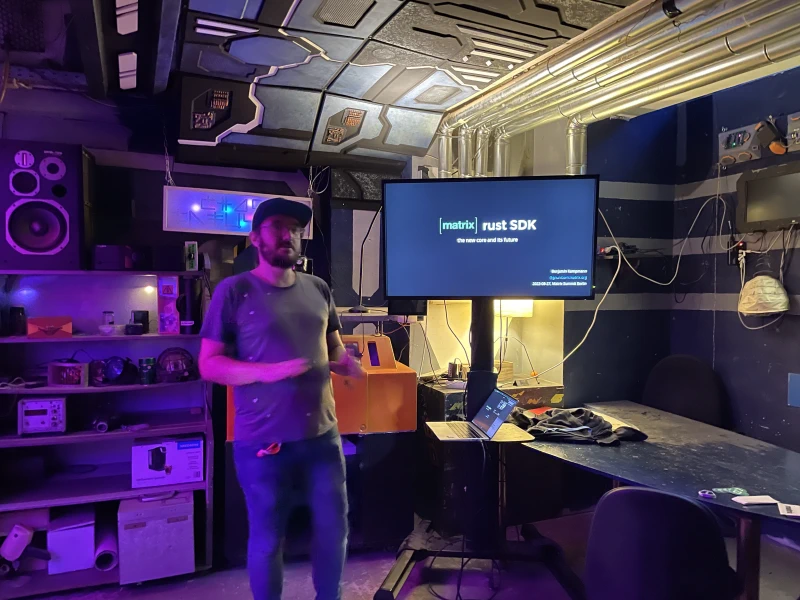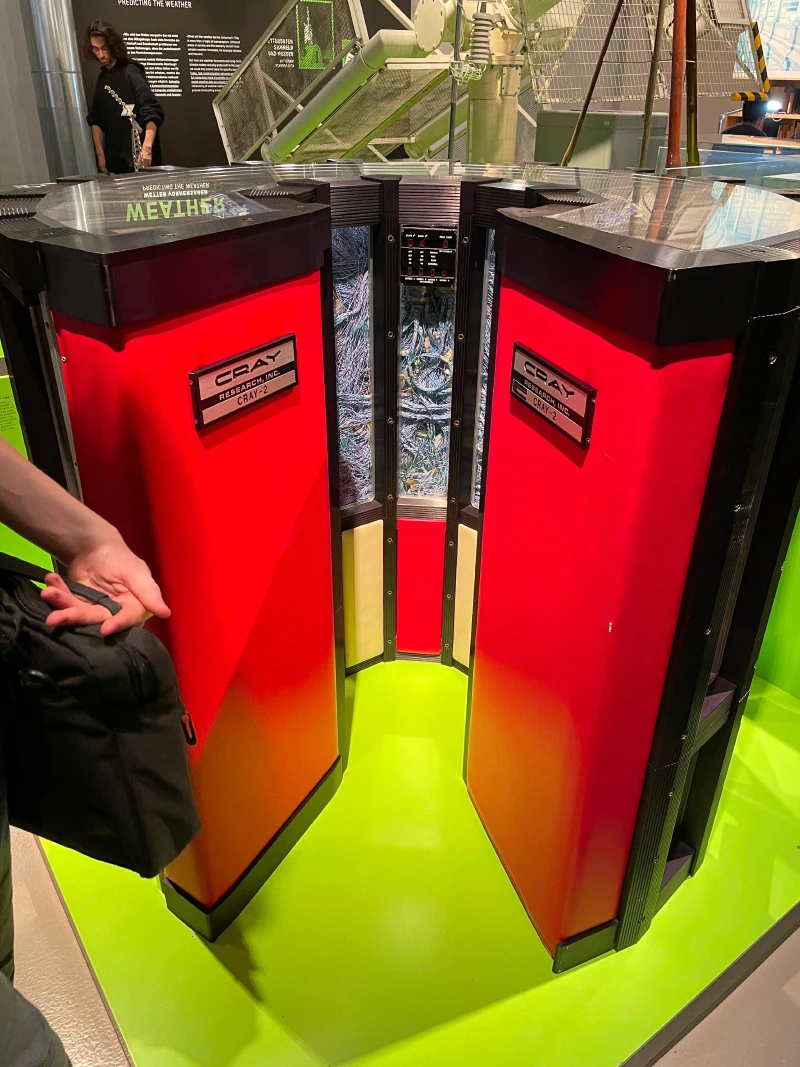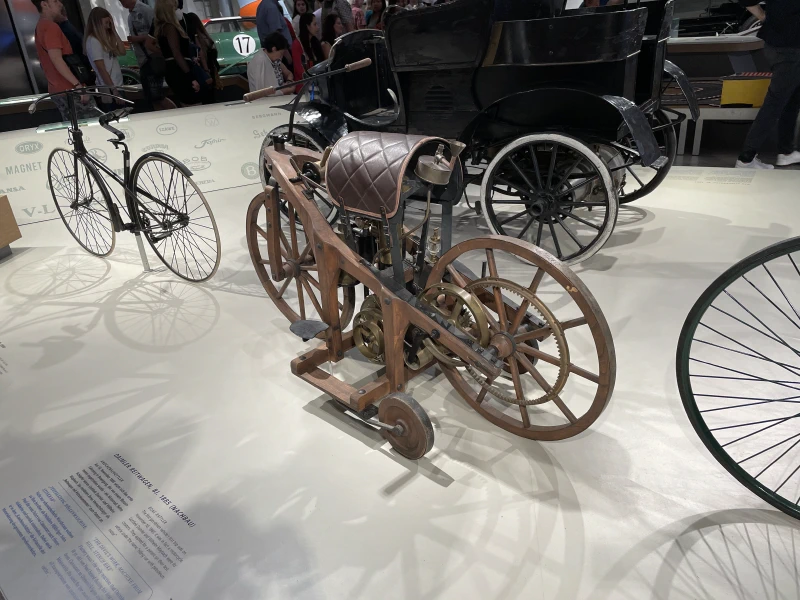Posted
on
in
Berlin Matrix Community Summit 2022, Conferences
• 1734 words
• 9 minute read
Tags:
Travel, Berlin, Germany, Matrix, Matrix Community Summit
The main purpose of my trip this week was for the Berlin Matrix Community Summit, an event organized by members of the Matrix community in Berlin. Matrix is the chat protocol that Beeper (the company I work for) is building our chat app on top of. The protocol is developed openly, and has a large community of open source developers, projects, and businesses all building on top of Matrix. This summit was the first Matrix-only event. There have been other events at which Matrix had a large presence such as FOSDEM, but this was the first ever Matrix-only event.
The people attending the event had quite diverse reasons for attending. Some, like myself, work full time at companies building on top of Matrix. Others are system administrators at institutions that are running Matrix servers for their internal chat needs. Still others are enthusiasts building projects with Matrix or wanting to learn more about the ecosystem. In total, at least fifty-seven people were in attendance!
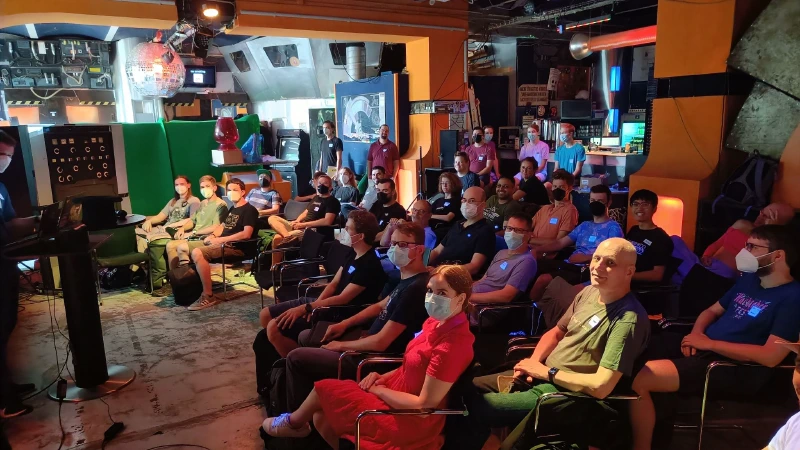
We are about to watch Christian present some of the advancements that have happened in the Matrix ecosystem over the past year.
The summit was held at c-base, an open-source-focused hackerspace in the heart of Berlin. There were three rooms for talks and workshops and a packed schedule with three tracks throughout most of Friday and Saturday. There was also space outside by the River Spree with tables to hang out at.
Barcamp
On Thursday we had a barcamp which comprised of a meet-and-greet and introductions followed by creating a small schedule of discussions on some of the topics where there was mutual interest. At the discussions I attended, we talked about bridges, server load testing, various clients, and the Matrix specification.
In my opinion, the most interesting thing about the discussions was getting to know some of the conference participants and learn from their expertise and also their questions. The experience that everyone brought was quite diverse: Nadine is a UX designer, Nico is developing a native Qt Matrix client called Nheko, Jan is a network administrator of a Matrix deployment at Universität Graz in Austria, Christian works on bridges at Element, I work on Bridges at Beeper, Aiman just started working at a company that is building tools for bridging chats across multiple chat networks through Matrix, Jose works at a company building tools for businesses to bridge customer support chats into Matrix, Kim is a maintainer of a Python bot library and runs a homeserver for a couple dozen users, networkException is a high school student who maintains various open source projects including some related to Matrix, Henri and Charles are working on two unrelated social media platforms built on top of Matrix, and that was just a some of the participants in the barcamp which itself was a small subset of all the conference attendees.
Talks and Workshops
On Friday and Saturday, there was a full schedule of thirty-six talks and workshops hosted by twenty-four different presenters. During most of the conference, there were three tracks going at once. There were so many that I was not able to attend all of the ones I wanted to attend! I’ll give a few highlights of talks and workshops that I enjoyed.
Valentin’s Show us Your Homeserver workshop
As one of the first workshops of the summit, Valentin facilitated a time for people to discuss their homeserver configurations.
He had many interactive activities where we would break into groups based on various options that we had selected for our homeserver setups and discuss why we had chosen that particular setting. It was cool to get to meet some other homeserver admins and see what they were doing for their setups.
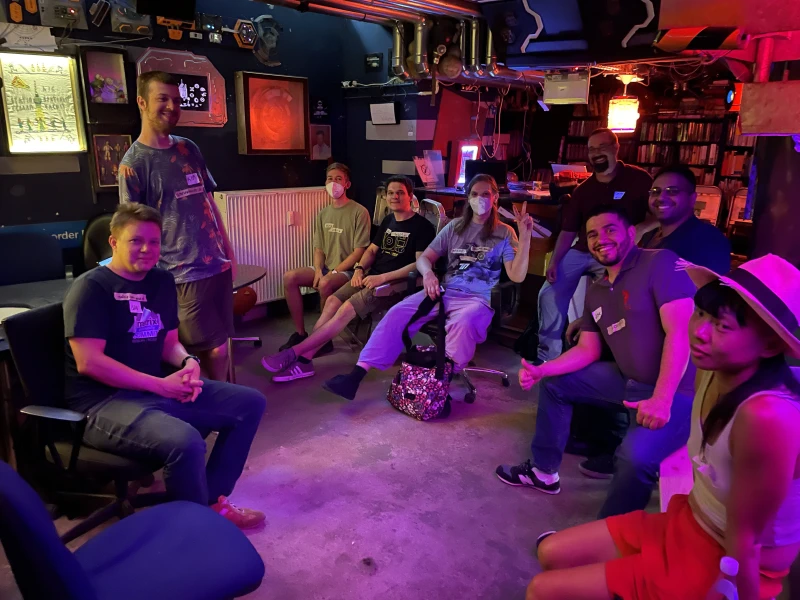
Having fun nerding out about homeserver setups Valentin was a great facilitator and got us up and moving and talking to each other about our setups.
Alex’s Kubernetes talk
In a presentation about his homeserver setup, Alex Babel discussed how he uses GitHub, ArgoCD, and Kubernetes to manage his Synapse instance. The talk was quite interesting and it was cool to see a smaller homeserver deployed using Kubernetes. We deploy using Kubernetes at Beeper, but I’m not directly on the team that manages it, and it’s quite complicated, so I don’t really have a grasp of what’s going on, but it was easy to understand Alex’s setup since it was at a smaller scale.
Ben’s Rust SDK talk
The lead developer on the Rust SDK from Element presented their work on the Rust SDK. The talk discussed why the new SDK was being developed, examined the features and benefits of the latest SDK, and he gave a preview of some of the things that they are planning on implementing next.
Yan’s Conclusion Talk
Yan, one of the main summit organizers gave the keynote presentation to conclude the summit. His talk was about the future of Matrix, and he communicated with a “friend from the future” via Matrix. This friend sent him notes about what future would bring in the Matrix ecosystem. The conclusion of the talk was an admonition to go build the future we want to see!
There were other talks that I attended that were very good including one by Hato about Matrix-backed collaboration widgets that his company has written for public-sector clients and Kim’s presentation about the Matrix Reminder Bot and his workflow with it. Additionally, there were many other talks and workshops that I wasn’t able to attend.
In all, the quality of the talks was fantastic, and I learned tons from everyone at the summit.
Presentation Time!
In addition to attending many talks and workshops, I gave a few as as well. On Friday, I gave a presentation about Hungryserv, a project that we are pursuing at Beeper to help us scale to more users. I was happy that so many people were interested in the project, and the attendees had many great questions.
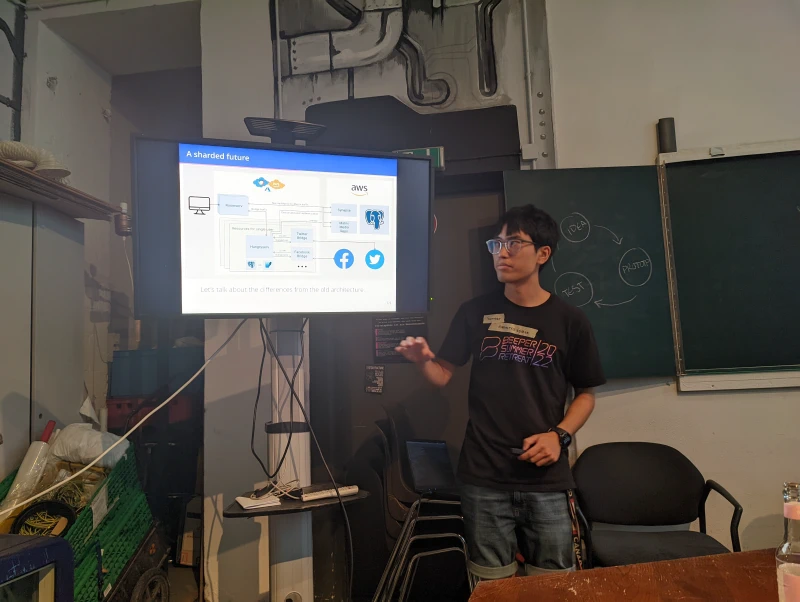
Hungryserv is the center of our new sharded architecture for scaling our infrastructure to support more users.
On Saturday, I gave a presentation about what Beeper is working on. I explained our vision, talked about Beeper, discussed what we’ve built and what current challenges we have, and described what it’s like working at Beeper.
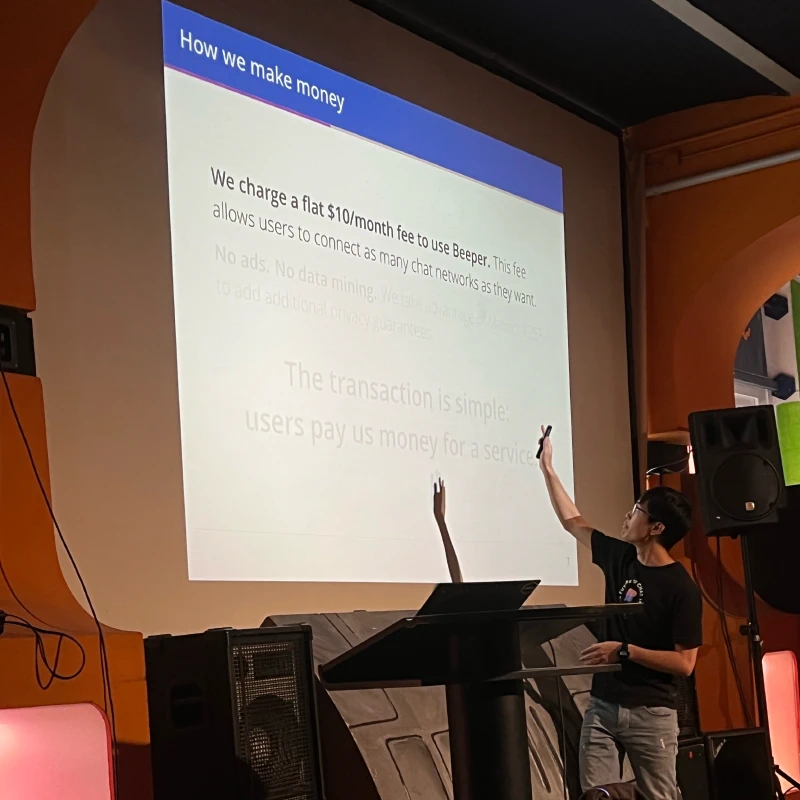
Here I’m presenting our simple business model: users pay us money for a service!
I also teamed up with Kim to give a workshop on how to write Matrix bots in Python. He presented simplematrixbotlib and I presented maubot. Then we gave participants some time to work on a bot of their own.
It was a pleasure to be able to give the talks and tell people about things that I’m passionate about.
The Hallway Track
One of my favourite parts of the entire event was being able to meet and talk to so many people in the community. The organizers provided many great opportunities for such interactions including barbecue dinners on Thursday and Saturday (sponsored by Beeper) and a dinner at a nearby Chinese restaurant on Friday (sponsored by Element).
During the barbecues, we had steaks, bratwursts, grilled vegetables, and cheeses along with some bread and lots of different sauces. Yan and Nadine were the main ones in charge of the conference food, but as the only Beeper employee in attendance, I did my best to help. They had thought of pretty much everything, though, so my role was mainly to take credit for securing funding for the food :)
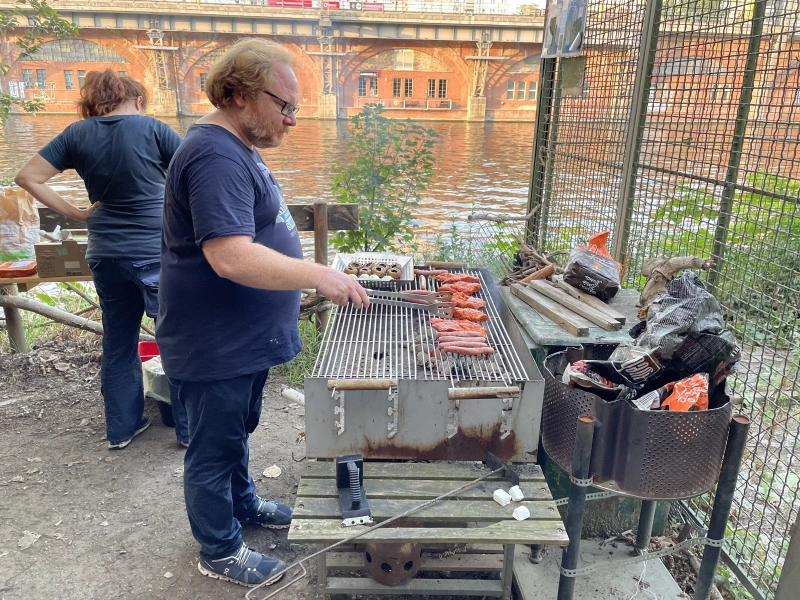
We ate outside overlooking a beautiful view of the Spree.
Food is always such a great unifier, and it was cool to interact with people outside of the formal scheduled event. I talked with everyone from some students running a Matrix server for their university’s IT department to a digital activist advocating for data sovereignty and privacy laws in the EU.
On Sunday, there was nothing in particular scheduled, but a handful of people gathered back at c-base to hack on various Matrix-related projects. It was a nice, relaxing way to end the conference.
Lange Nacht der Museen
On Saturday night, a few of us headed out after dinner to Lange Nacht der Museen, an event in Berlin where the museums are open late into the night and you can visit all of them for a discounted fee. Christian, networkException, Jan, and myself went, and we started at the Deutsches Technikmuseum which is a technology museum inside of an old train station. The museum had displays about the history of many different technologies including automobiles, motorcycles, audio-visual equipment, networks, and computers.
A CRAY-2 computer There are so many wires! Imagine having to debug which one was faulty! | An early motorcycle I don’t think this would pass any modern safety inspections… |
An early Benz automobile This car came out a few years after the Ford Model T, and it’s obvious that even then, it was meant as a luxury alternative. | |
After the Technikmuseum, we went over to the planetarium. It was about to close, but we managed to go in and see a short animated film about a space station and the interactions between an astronaut, a fish, a tiger, and a boy (who I think was based off of Mowgli). It was a cute little film, and a fun way to end the evening.
Conclusion
In all, the summit provided many opportunities to meet people in the community and get to know them on a personal level. I’m grateful for the organizers putting together such a great schedule!
I think the Matrix ecosystem has a bright future ahead of it. I feel like all of us in the community are at the start of something big. There are so many smart, energized people working on Matrix, and I feel fortunate that I was able to get to know a few of them at the summit. I hope that history will consider many of the people in attendance at this summit as pioneers of their respective niches within the Matrix ecosystem.
Matrix is a community. It’s not dependent on a single company. And after attending the first ever Matrix Community Summit, I can say with confidence that the Matrix community is strong.
The future of Matrix is bright: now we just have to go build it!

